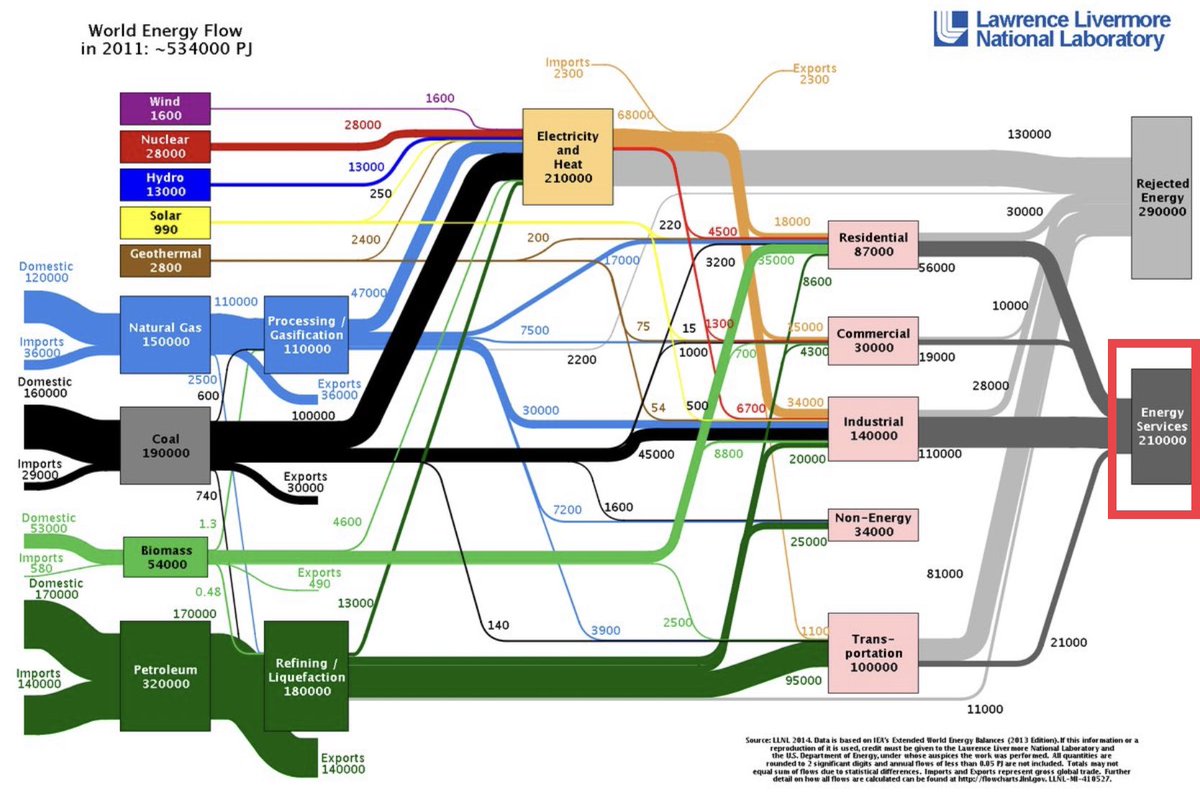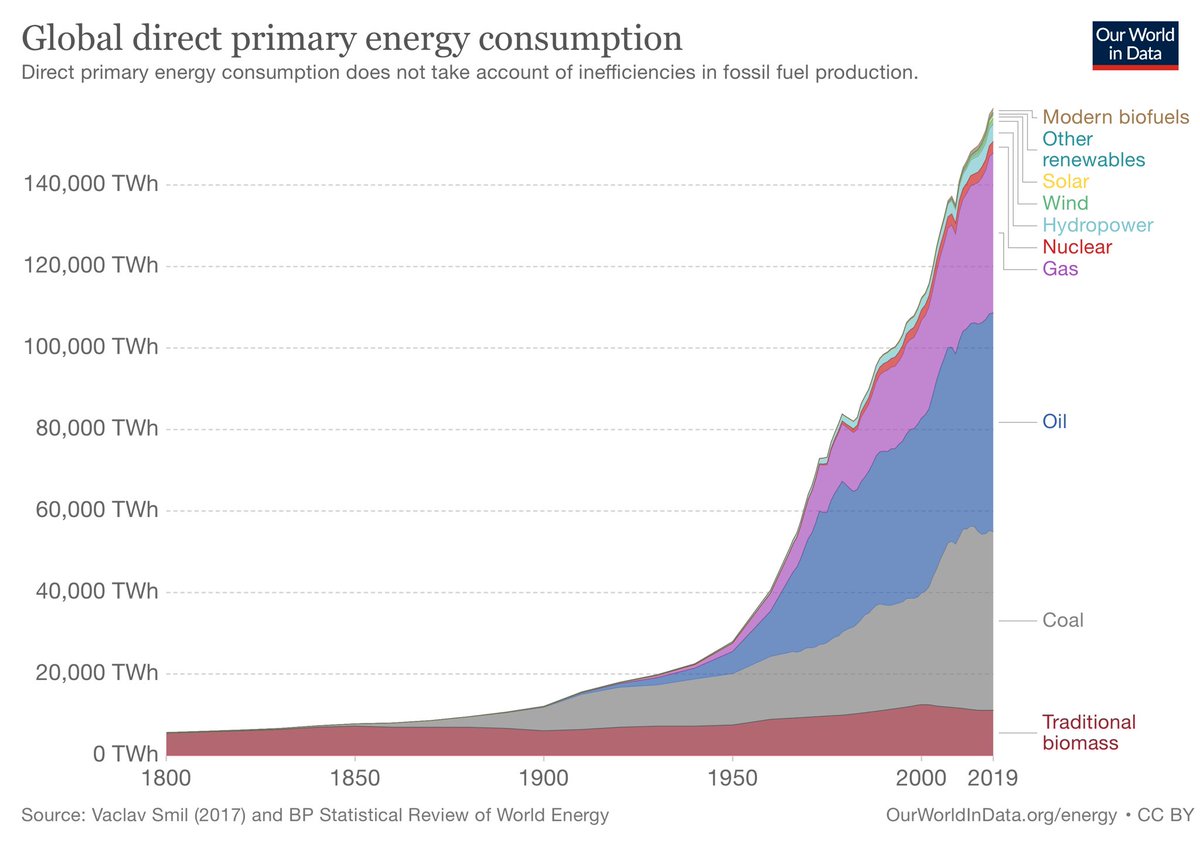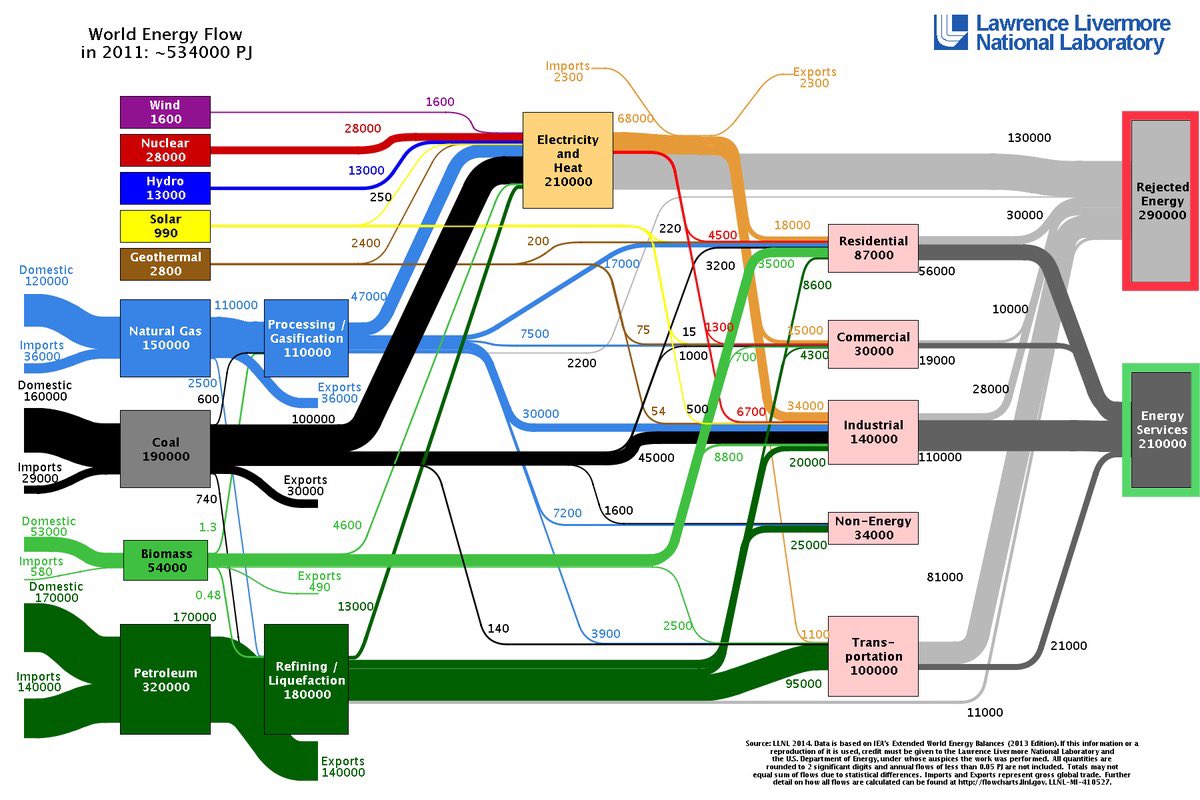WORLD 4.0 - NAVIGATING THE ENERGY TRANSITION
As we move deeper into this new world of ours, the transition to Energy 4.0 is starting to become more real and more urgent
So how big is this transition in terms of market scale ?
As we move deeper into this new world of ours, the transition to Energy 4.0 is starting to become more real and more urgent
So how big is this transition in terms of market scale ?
Let’s start with this wonderful flow chart from the Lawrence Livermore National Laboratory LLNL @Livermore_Lab
1. The total Energy consumed by our world in 2011 was around 534,000 PetaJoules or PJs
1. The total Energy consumed by our world in 2011 was around 534,000 PetaJoules or PJs
2. One PetaJoule is equal to one quadrillion or 1 x 10^15 joules
Just for illustration, 210 PJ is about 50 megatons of TNT which is the amount of energy released by the Tsar Bomba, the largest man-made explosion ever
Just for illustration, 210 PJ is about 50 megatons of TNT which is the amount of energy released by the Tsar Bomba, the largest man-made explosion ever
3. We can convert this into the more familiar kWh :
534,000 x 10^15 PJs = 148,333 x 10^9 kWh
148,333 x 10^9 kWh = 148,333 TWh
This was the Energy Consumption of our world in 2011
- and it was a function of both the way we used Energy and where we sourced that Energy from
534,000 x 10^15 PJs = 148,333 x 10^9 kWh
148,333 x 10^9 kWh = 148,333 TWh
This was the Energy Consumption of our world in 2011
- and it was a function of both the way we used Energy and where we sourced that Energy from
4. Gross global energy consumption has increased from 2011 and as of 2019 the total is now 158,839 TWh
5. The LLNL diagram shows that 58% of the Energy Consumed is actually wasted
- and only 42% of the total is actually performing the intended function
Most of this waste is because the conversion of Fossil Fuels to useful energy is very wasteful
- and only 42% of the total is actually performing the intended function
Most of this waste is because the conversion of Fossil Fuels to useful energy is very wasteful
6. Eliminating Fossil Fuels will cut this waste dramatically
Converting the global economy to Electricity sourced from Solar, Wind and Hydro should cut the primary energy supply required by about 50% to say 80,000 TWh in 2019 terms
Converting the global economy to Electricity sourced from Solar, Wind and Hydro should cut the primary energy supply required by about 50% to say 80,000 TWh in 2019 terms
7. We can use a global benchmark price of $0.10 per kWh to place a ANNUAL SALES VALUE on this New Energy Market
80,000 TWh x $0.10 per kWh = $8 trillion per year
80,000 TWh x $0.10 per kWh = $8 trillion per year
8. How much Battery Storage capacity would be required ?
- if we allow a total of 1 day’s energy storage systemwide, then we need 80,000 TWh / 365 days = 220 TWh of Battery Storage
- if we allow a total of 1 day’s energy storage systemwide, then we need 80,000 TWh / 365 days = 220 TWh of Battery Storage
9. If we assume that this storage capacity takes 30 years to build out, then the average annual rate of supply needs to be 220 TWh / 30 years = 7,300 GWh per year
10. The average price of storage appeared to be around $735 per kWh in 2020 Q3 from Tesla’s financial reports
11. If we assume that this pricing falls over time to around $500 per kWh then the ANNUAL SALES VALUE for Battery Energy Storage Systems would be :
7,300 GWh x $500 per kWh = $3.65 trillion per year
7,300 GWh x $500 per kWh = $3.65 trillion per year

 Read on Twitter
Read on Twitter




